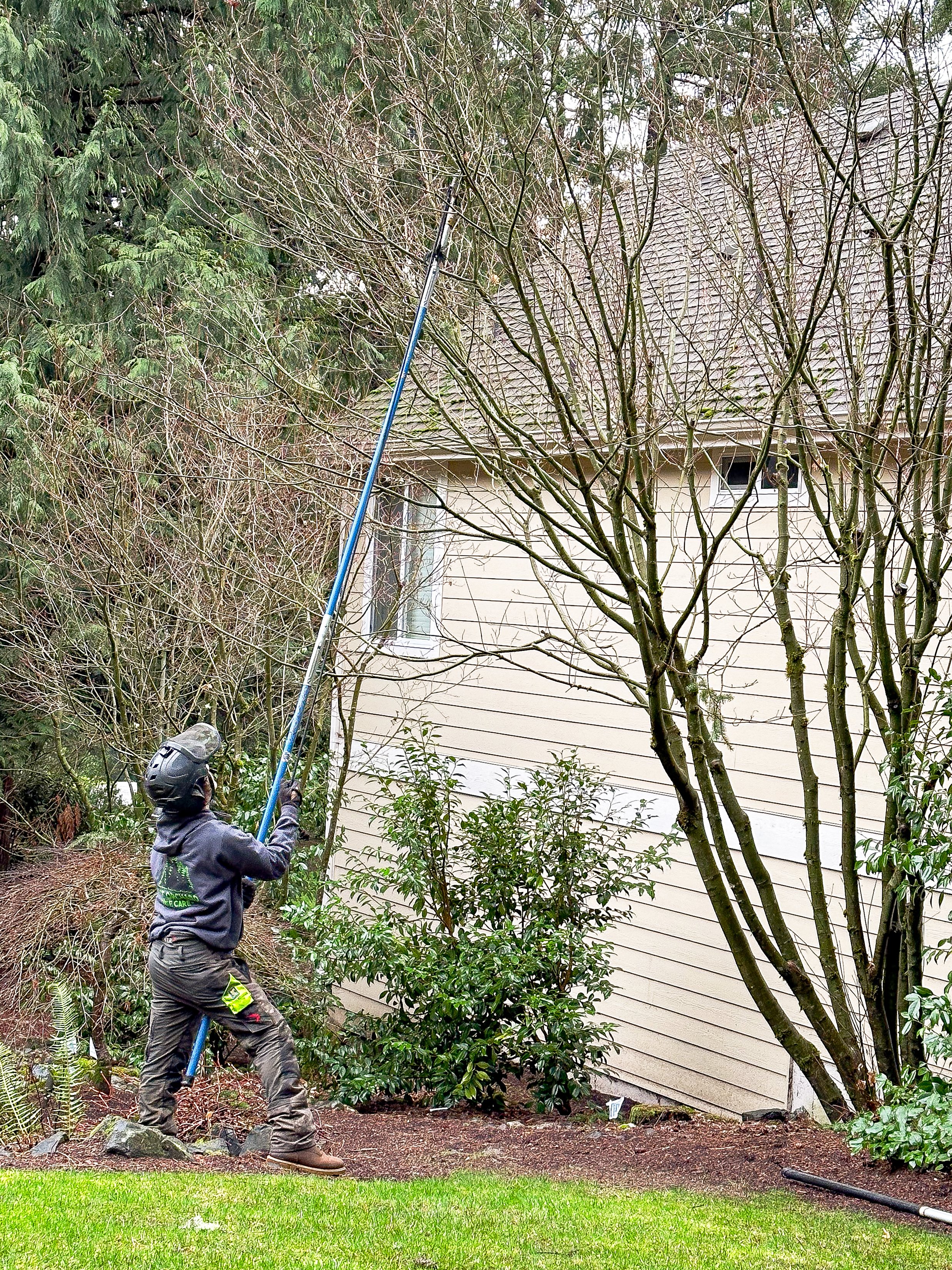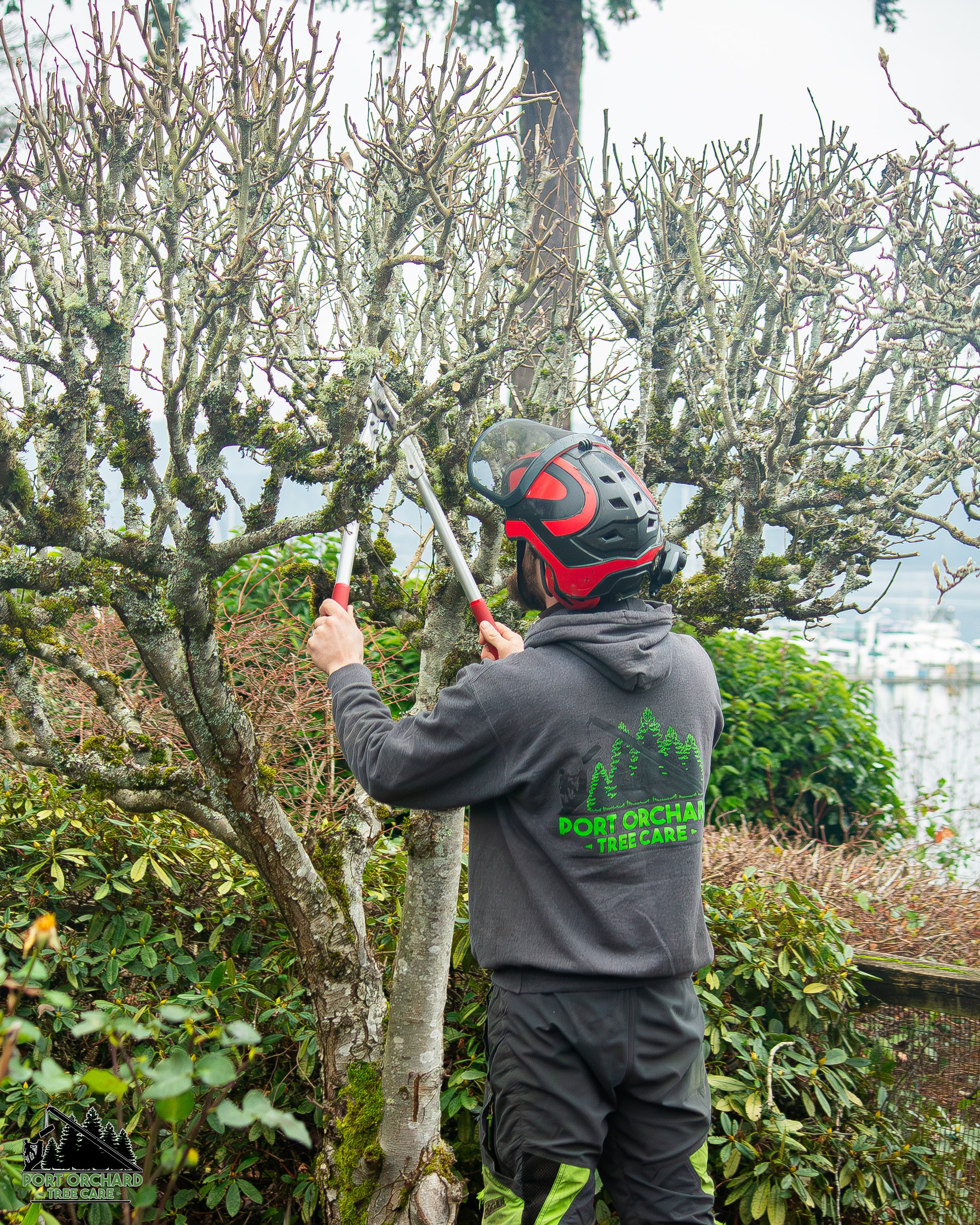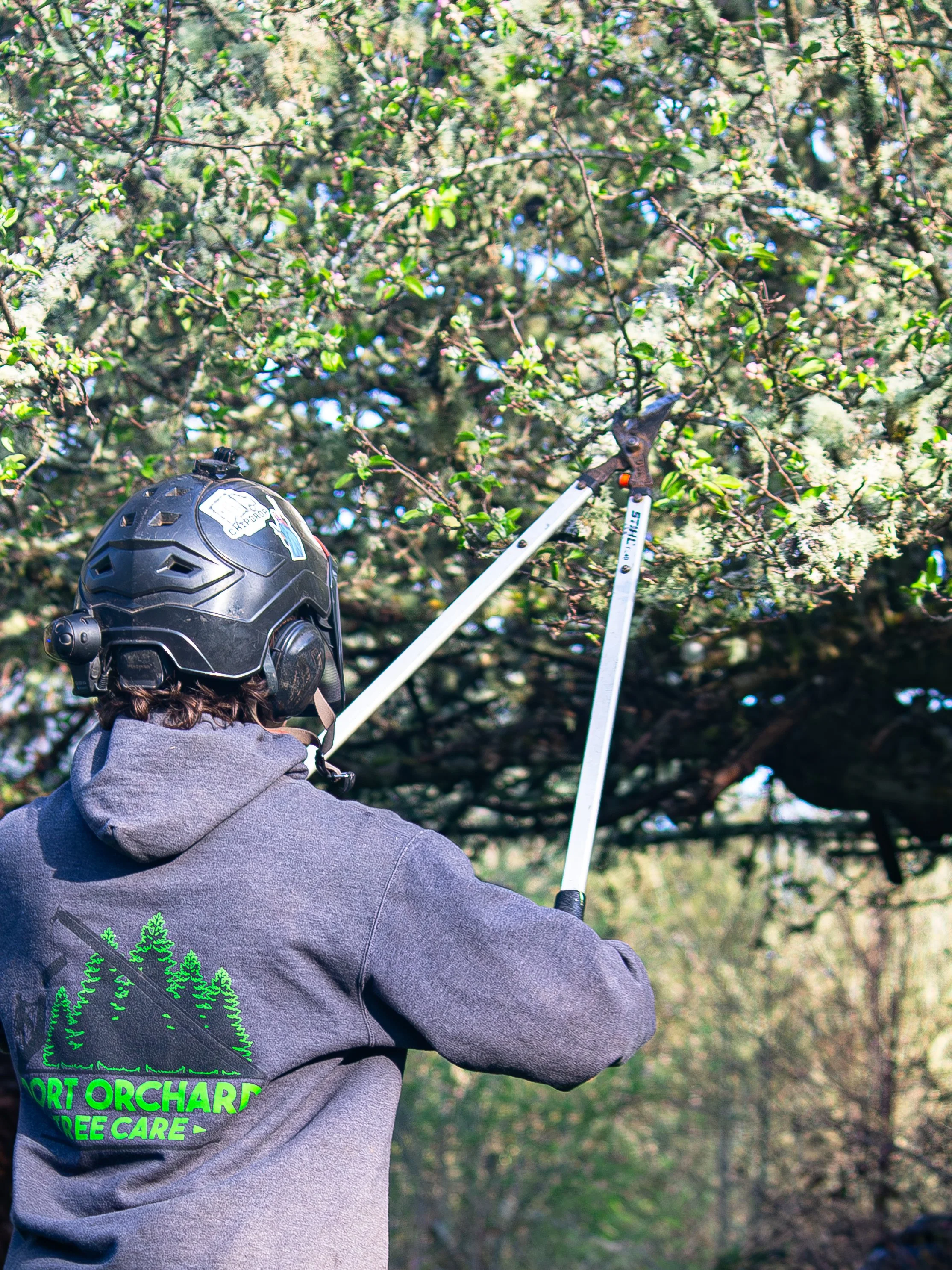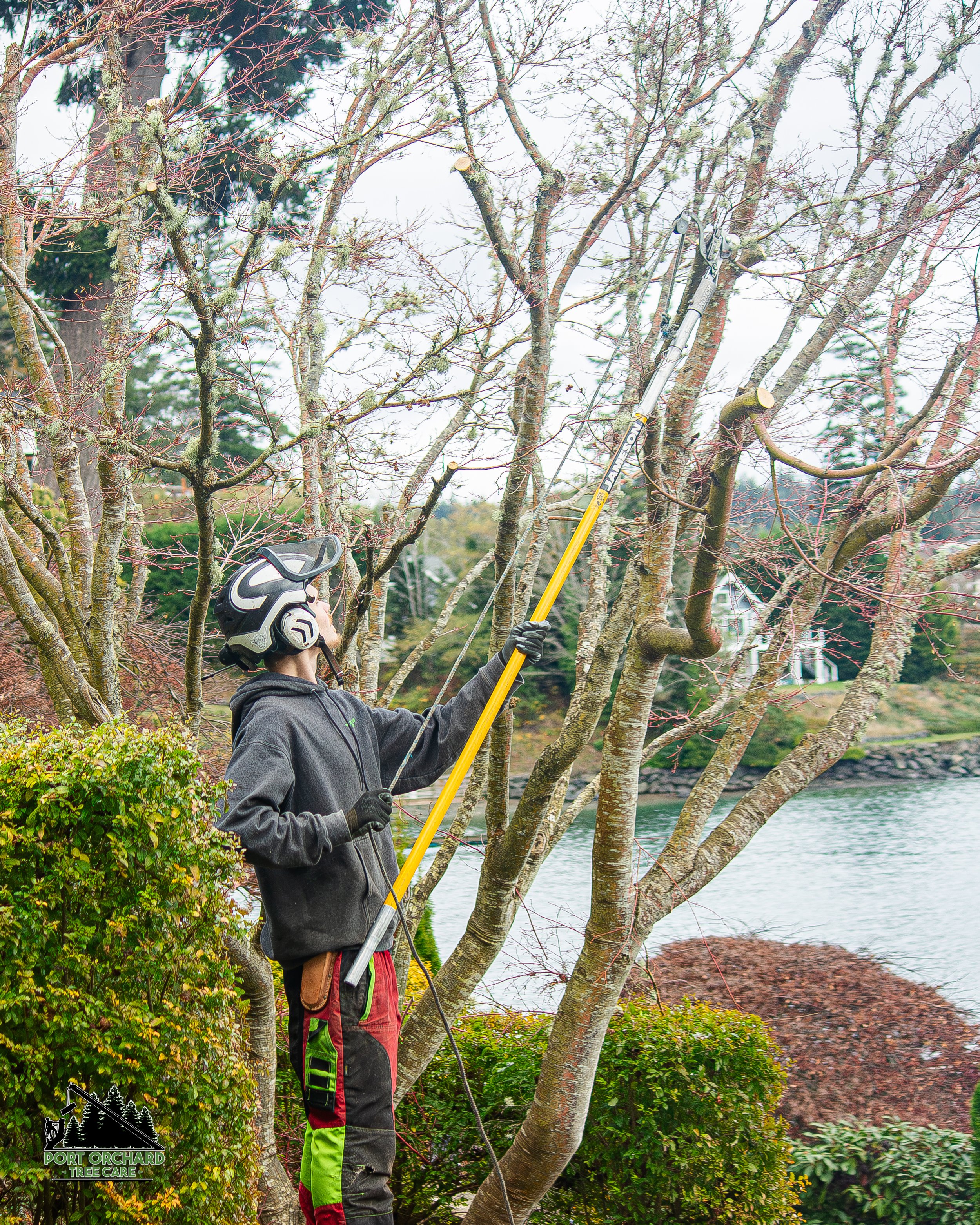
TREE Pruning
Tree Trimming
Common issues with large trees in the Pacific Northwest include but are not limited to: canopy blocking solar panel exposure or satellite TV reception, roof damage due to impact or shade, sudden environment change leading to root failure [new housing development removing neighboring trees].
Tree trimming comes in many forms including raising the lower canopy, reducing the upper canopy, “wind sail” pruning, structure clearance and end-weight reductions.
Our bucket-boom truck allows us to reach delicate areas on a tree where climbing is not possible due to lack of limb strength (size).
While it is possible to reduce the length of large branches within a tree’s canopy via climbing, the climber’s “work zone” is limited to what the tree’s canopy will allow. In a majority of cases, reducing the size of a tree’s entire canopy is only possible with tools like a 55-ton crane with accompanying man-basket or a 65-foot boom lift. Check out our ‘Hedge Trimming’ page to see pictures of the man-basket in action to take a massive Leland Cypress hedge.



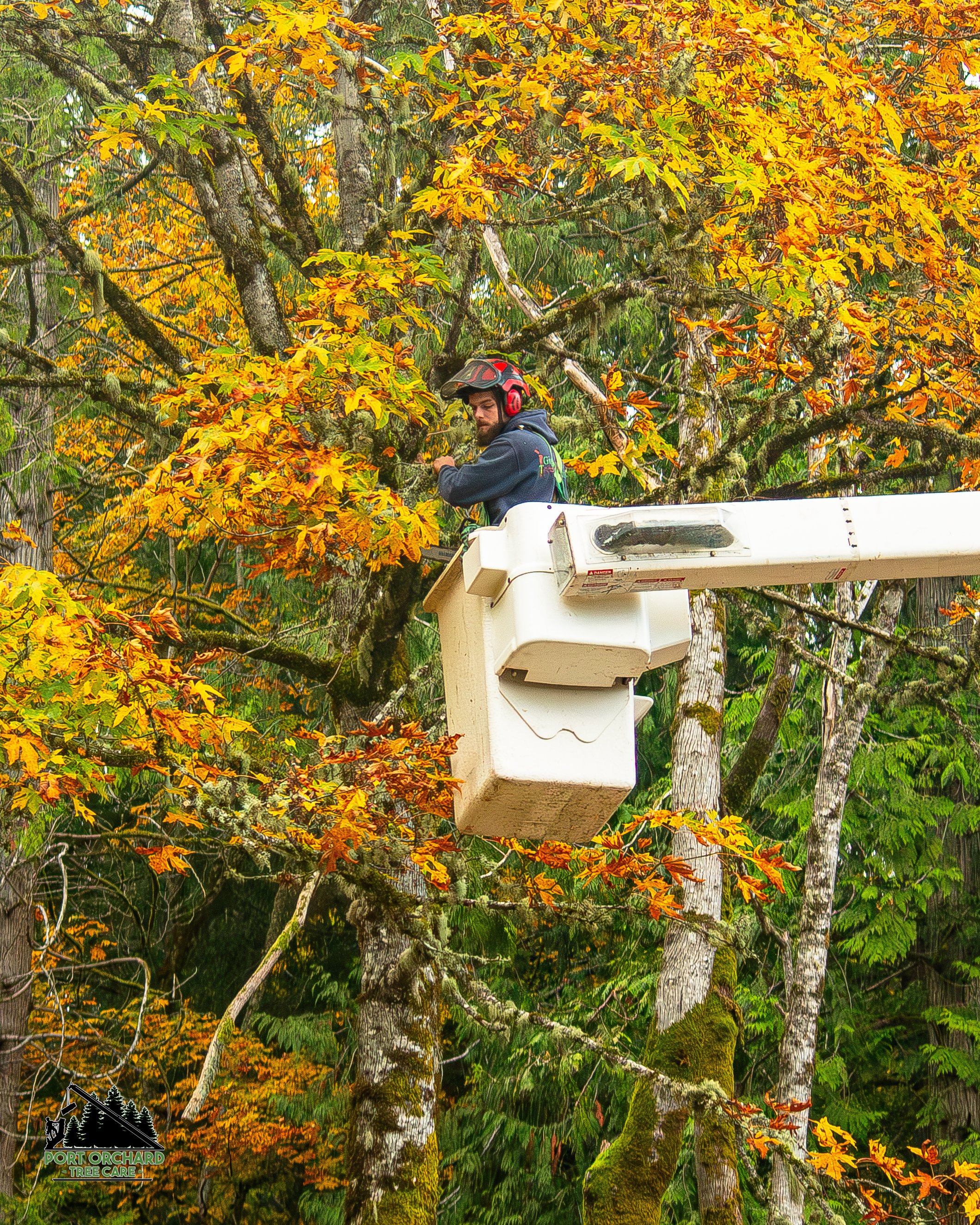
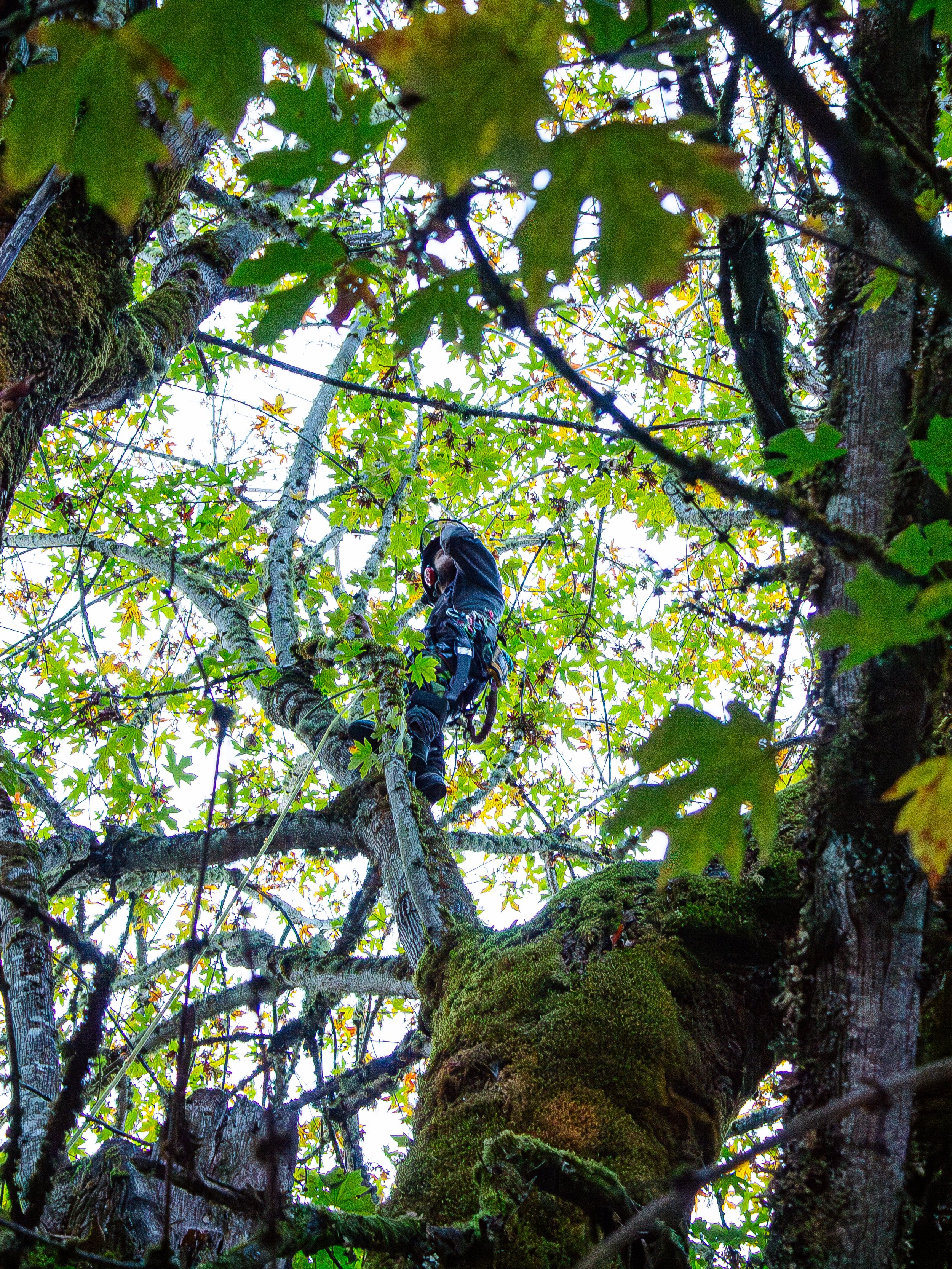
Ornamental & Fruit Tree Pruning
Structural pruning is paramount to keeping ornamental and fruit trees healthy. When pruning is not performed on a yearly to bi-yearly basis, multi-stem trees will allow themselves to grow until failure. Reducing weight and density in the canopy allows the tree to send energy and nutrients to the proper channels, which leads to a longer life span.
Ornamental and fruit tree pruning must be performed when the trees are dormant in the winter months. If you are interested in having your tree(s) pruned please don’t hesitate to contact us as our pruning schedule fills up throughout year for November to early-March.

